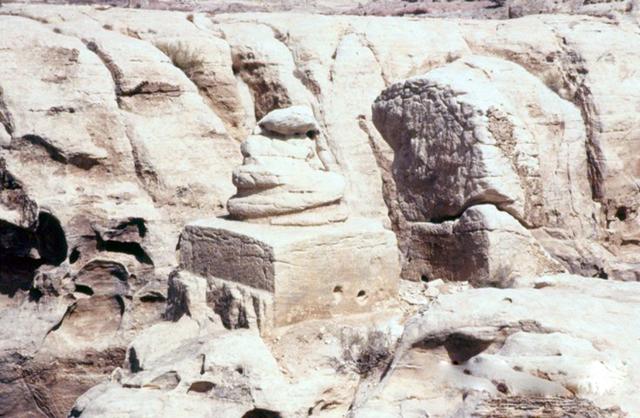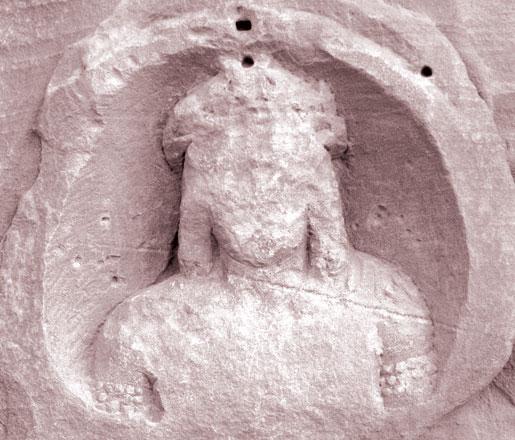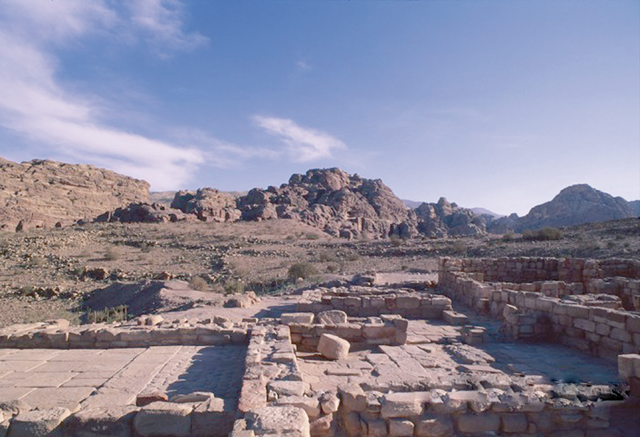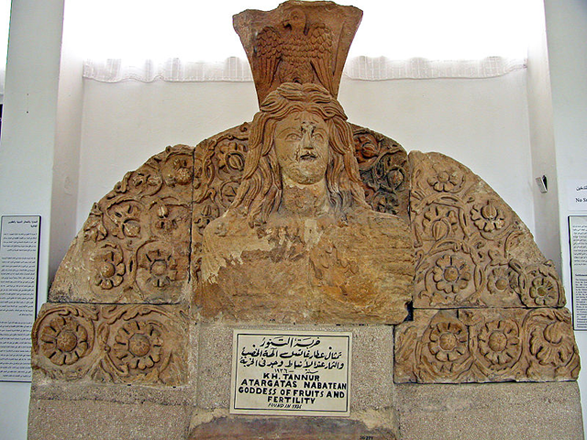You are here
Nabataean snake symbolism eludes archaeologists — scholar
By Saeb Rawashdeh - Jul 03,2022 - Last updated at Jul 03,2022

Snake monument inThugra, Petra (Photo courtesy of ACOR/Rami Khouri Collection)
AMMAN — Petra’s Snake Monument in the southern part of the rose-red city offers clues to the role of serpents in Nabataeans religious practices, according to a German scholar.
The Snake Monument in the south of Petra is a sculptural snake on the top of a tomb, Professor Robert Wenning from the University of Munster told The Jordan Times in an email interview.
“The tomb is shaped like a cube and this is the earliest sculpture one can find at Petra. I date this monument to the early second century BC and the idea for this snake is taken over from the Hellenistic world, especially from Rhodes. In this case the snake is the guardian of the tomb,” Wenning said.
He noted that inside the small tomb scholars found a rock-cut relief on the wall of the tomb of two snakes winding upwards.
Inside the large rock-cut room, or cella, there is a big snake next to the large central niche, Wenning said.
“We do not know what was inside the large central niche. Figures of deities have been assumed, but nothing remains. Therefore, we cannot define the role and the context of the snake in this cella, being a guardian, being an animal related to a particular deity, or indicating some mystery cults related to a chthonic sphere,” he noted.
In addition to this monument, there is a snake sculpture near the Ain Braq Aqueduct in Qantara, Wadi Musa, he added.
This sculpture depicts a snake winding upwards and resembles to a sea-horse, Wenning said, adding that the species of snake looks similar to Egyptian cobras.
“Among the frieze of weapons reliefs, there is a shield with a snake. Several other reliefs depict the bust of Hermes and the famous attribute is his heraldic rod, the kerykeion or caduceus,” Wenning said.
He added that the staff is topped by two intertwined snakes and that the Greek goddess Athena carried the Aegis embellished with a Gorgoneion (an ancient Greek amulet of a gorgon head), he said.
“The tousled hair of Medusa is partly formed like entwined snakes and often a knot of snakes shapes a kind of necklace at heads of Medusa and other masks,” he said, noting that a fresco discovered in Wadi Musa in 1996 also depicts a snake.
“Considering the three rock-cut votive reliefs, it could be that a particular deity was venerated to give protection. It does not mean, we have to assume a snake-goddess. It could easily have been one of the well-known deities at Petra, to whom people appealed to for this kind of protection,” Wenning said.
He added that “these suggestions remain hypothetical as we do not have Nabataean scriptures on the subject”.
“We are not able to describe the role of snakes or serpents in Nabataean religion. I assume there is one, but answers will be speculations,” Wenning added.
Related Articles
AMMAN — Orientalists R.
AMMAN — During Hellenistic Period [323BC-32BC] very few inscriptions referred to the Nabataean merchants in the Hellenistic world.
AMMAN — Khirbat at-Tannoris, located at the northern border of Edom, near Wadi Al Hasa, was excavated by the American archaeologist Nelson G














